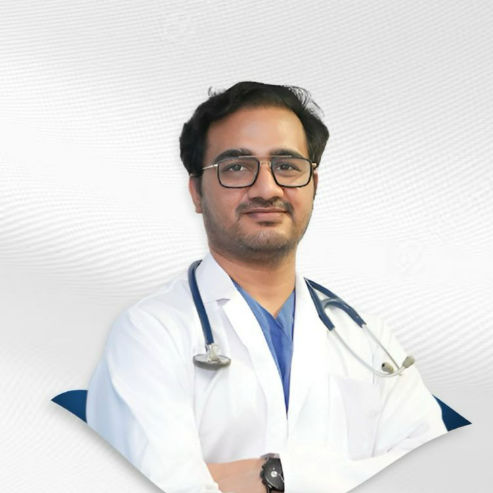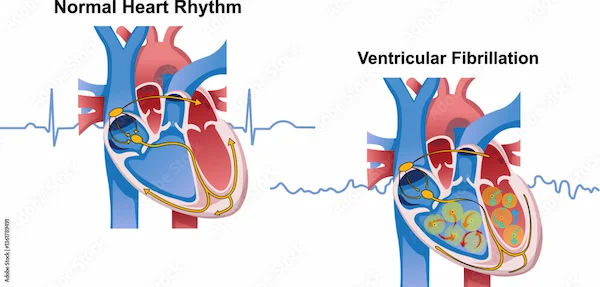CT Angiogram Procedure: What You Need to Know
Learn all about the CT angiogram procedure, a non-invasive imaging test used to diagnose heart and vascular conditions. Discover its benefits, risks, and how to prepare.

Written by Dr Sonia Bhatt
Last updated on 3rd Jul, 2025
Heart disease is a major health concern worldwide, and accurate diagnosis is key to effective treatment. One of the most advanced and non-invasive methods for assessing the health of your heart and blood vessels is the CT angiogram (CTA), also known as a coronary CT angiogram (CCTA). This advanced imaging test can help doctors identify conditions like coronary artery disease (CAD), atherosclerosis, and other vascular conditions, enabling them to provide the most appropriate treatment plan. In this article, we’ll explore the CT angiogram procedure, what it involves, its benefits, potential risks, and how you can prepare for it.
What Is a CT Angiogram?
A CT angiogram (CTA) is a non-invasive imaging test that combines X-ray technology and computerised tomography (CT) to create detailed images of the blood vessels in the body, particularly those around the heart. This procedure is used primarily to evaluate the coronary arteries—the vessels that supply blood to the heart muscle—but it can also be used to assess blood vessels in other parts of the body.
Unlike traditional angiograms, which involve inserting a catheter into the arteries to inject dye directly, a CT angiogram uses a contrast dye injected into a vein, usually in your arm. The dye helps enhance the images captured by the CT scanner, making it easier for doctors to see any blockages, narrowing, or abnormalities in the blood vessels.
Why Is a CT Angiogram Done?
CT angiograms are often used to diagnose or evaluate the following conditions:
Coronary artery disease (CAD): Blockages or narrowing of the coronary arteries can lead to chest pain, heart attacks, or even heart failure. A CTA helps identify these issues early.
Atherosclerosis: It is a condition where fatty deposits build up inside the arteries, leading to stiffening and narrowing. A CTA can detect early signs of atherosclerosis.
Abnormal coronary artery anatomy: Some individuals may have unique or irregular coronary artery structures that need to be monitored or treated.
Vascular malformations: CTA can identify issues like aneurysms, vascular stenosis (narrowing of blood vessels), or congenital malformations.
Pre-surgical planning: If you're scheduled for surgery, particularly heart surgery, a CTA may help your doctor understand your vascular structure better, ensuring the safest approach.
How Does the CT Angiogram Procedure Work?
The CT angiogram procedure typically involves several key steps:
1. Preparation
Before the procedure, your doctor will explain the process, answer your questions, and go over any necessary precautions. You may need to stop eating or drinking for several hours before the test, especially if you’re receiving sedation or contrast dye. If you have a history of kidney problems or are taking medications for diabetes, your doctor will need to know beforehand, as this could impact the use of contrast dye.
2. The Procedure
When you arrive at the imaging centre or hospital, you'll be asked to change into a hospital gown. The procedure itself is typically performed in a specialised CT room with a large, doughnut-shaped machine.
Here’s what happens next:
Contrast Dye Injection: A nurse or technician will insert an intravenous (IV) line into your arm to administer the contrast dye. This dye helps improve the clarity of the images and highlights the blood vessels in your body. You may feel a warm sensation or a metallic taste in your mouth as the dye enters your bloodstream, which is normal.
Positioning and Scanning: You'll be asked to lie on a table that slides into the CT scanner. You will need to remain as still as possible during the scan, as movement can blur the images. The CT machine will rotate around your body, taking detailed X-ray images of your blood vessels. Depending on the protocol, the scan typically takes about 10-15 minutes.
Breathing Instructions: To help achieve clear images, you may be instructed to hold your breath for short periods during the scan. This helps prevent motion blur from your breathing.
Communication: The radiologist or technician will communicate with you throughout the procedure to ensure your comfort and address any concerns.
3. Post-Procedure
After the scan, you’ll be asked to wait for a short period while the technician checks your images. In most cases, no recovery time is needed. If you received contrast dye, it may take a few hours for your body to clear it fully, but you can resume normal activities unless otherwise instructed by your doctor.
Benefits of a CT Angiogram
The CT angiogram procedure offers several benefits that make it a preferred diagnostic tool in many cases:
Non-invasive: Unlike traditional angiograms, which require a catheter insertion, a CTA is entirely non-invasive, reducing the risk of complications.
Fast and Accurate: The procedure is quick, and the results are highly detailed. It can provide clearer images than conventional X-rays, allowing for better diagnosis and treatment planning.
Comprehensive: A CTA can help doctors visualise the entire coronary artery network, making it easier to identify blockages or abnormalities that may not be visible with other imaging techniques.
Early Detection: By identifying problems early, a CTA can help prevent serious cardiovascular events, such as heart attacks or strokes, from occurring.
Minimal Discomfort: Aside from the initial needle insertion for the contrast dye, the procedure is relatively comfortable and involves minimal risk of complications.
Risks and Considerations
While the CT angiogram procedure is generally safe, there are some risks and considerations to keep in mind:
Contrast Dye Allergies: Some individuals may be allergic to the contrast dye used during the procedure. Make sure to inform your healthcare provider if you have a known allergy to iodine or contrast agents.
Radiation Exposure: Since a CT angiogram uses X-rays, there is a small amount of radiation exposure. The benefits of the procedure generally outweigh the risks, but it’s important to discuss any concerns with your doctor, especially if you are pregnant or have a history of radiation-related health issues.
Kidney Function: The contrast dye can affect kidney function in certain individuals, especially those with pre-existing kidney problems. Your doctor may perform blood tests before the procedure to assess your kidney function.
After the Procedure: What to Expect
Post-procedure, you will generally be able to resume normal activities almost immediately unless instructed otherwise by your doctor. However, you may be advised to drink plenty of fluids to help flush the contrast dye from your system.
If you experience any unusual symptoms—such as severe pain, swelling, redness at the IV site, or signs of an allergic reaction (like difficulty breathing)—contact your healthcare provider immediately.
Conclusion
A CT angiogram is an incredibly valuable tool for diagnosing heart disease, detecting blockages, and providing insights into vascular health. It’s non-invasive, relatively quick, and provides highly detailed images of your blood vessels. For patients concerned about heart disease or needing a comprehensive cardiovascular evaluation, a CT angiogram can provide critical information to guide treatment and prevention strategies.
If you’re considering a CT angiogram, consult your healthcare provider to discuss the procedure, understand your risks, and ensure you’re fully prepared. With early detection and the right care, you can take proactive steps to protect your heart and overall health.
Consult Top Cardiologists
Consult Top Cardiologists

Dr. Anand Ravi
General Physician
2 Years • MBBS
Bengaluru
PRESTIGE SHANTHINIKETAN - SOCIETY CLINIC, Bengaluru

Dr. Tripti Deb
Cardiologist
40 Years • MBBS, MD, DM, FACC, FESC
Hyderabad
Apollo Hospitals Jubilee Hills, Hyderabad
Dr Moytree Baruah
Cardiologist
10 Years • MBBS, PGDCC
Guwahati
Apollo Clinic Guwahati, Assam, Guwahati

Dr. Zulkarnain
General Physician
2 Years • MBBS, PGDM, FFM
Bengaluru
PRESTIGE SHANTHINIKETAN - SOCIETY CLINIC, Bengaluru

Dr. Janjirala Seshivardhan
Cardiologist
7 Years • MBBS,DNB(GM),DM(Cardiology)
Manikonda Jagir
Apollo Clinic, Manikonda, Manikonda Jagir


